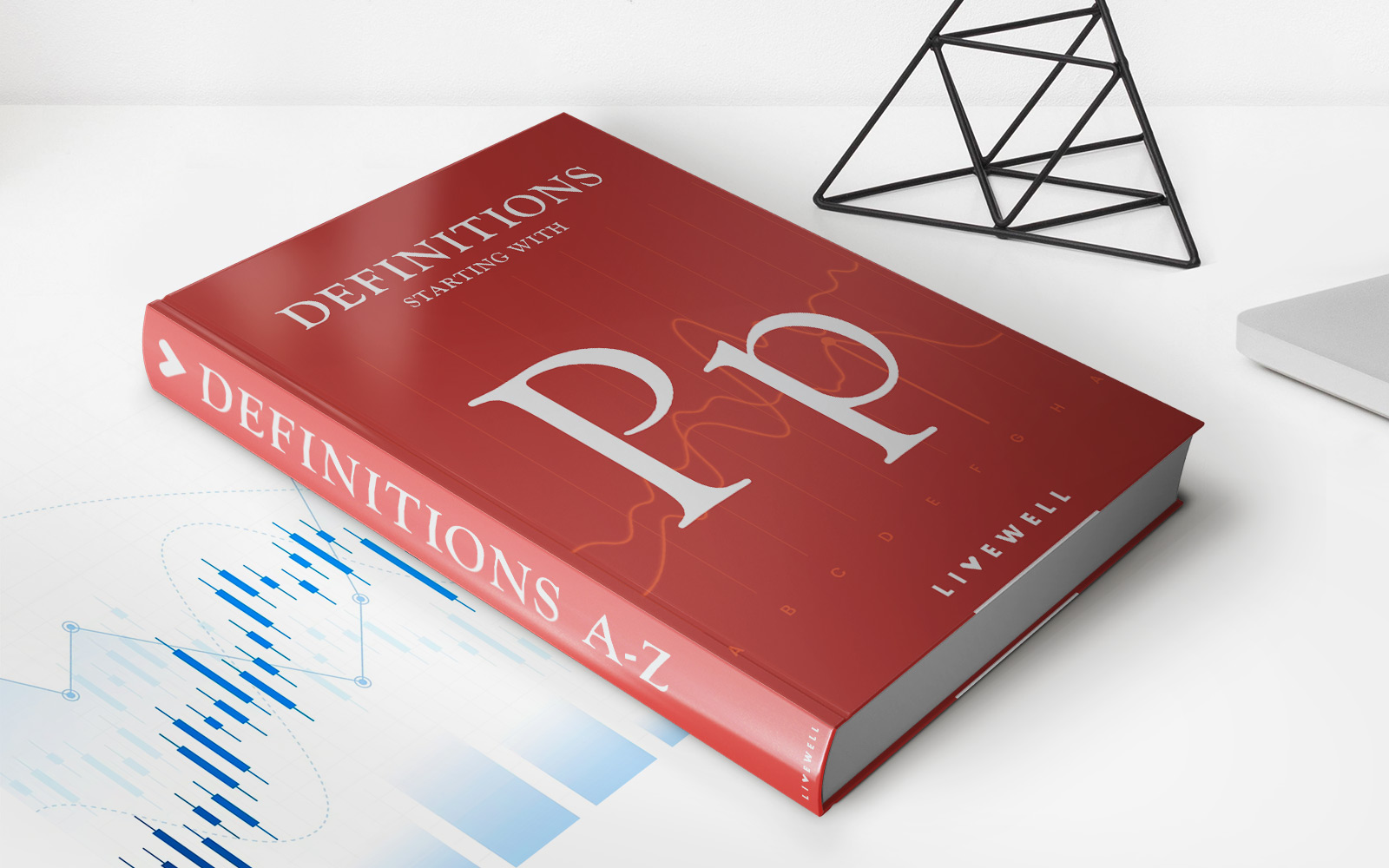

Finance
What Does Lender Credit Mean
Modified: January 15, 2024
Learn what lender credit means in the world of finance and how it can impact your borrowing options. Enhance your financial knowledge with us today.
(Many of the links in this article redirect to a specific reviewed product. Your purchase of these products through affiliate links helps to generate commission for LiveWell, at no extra cost. Learn more)
Table of Contents
Introduction
Welcome to the world of lending! Whether you’re a first-time homebuyer or an experienced borrower, navigating the world of mortgages can be a daunting task. There are many terms and concepts to understand, one of which is “lender credit”. In this article, we will explore what lender credit means in the context of financing and how it can impact your borrowing experience.
When you apply for a mortgage, you may encounter various fees and costs associated with the loan. These can include appraisal fees, origination fees, and closing costs, to name a few. Lender credit is a term used to describe a financial incentive provided by the lender to the borrower, which can help alleviate some of these costs.
Essentially, lender credit is a form of rebate or financial assistance offered by the lender to the borrower. Instead of the borrower paying certain upfront costs, the lender provides a credit that can be applied towards these expenses. It’s important to note that lender credit is not a gift; rather, it is a strategic financial arrangement that can benefit both parties involved.
The amount of lender credit varies and is typically based on a percentage of the loan amount. For example, if you have a $200,000 mortgage and the lender offers a 1% credit, you could receive a $2,000 credit towards your closing costs. This can significantly reduce your out-of-pocket expenses, making it an attractive option for many borrowers.
Lender credit can be particularly beneficial for borrowers who have limited funds available for upfront costs or who would prefer to preserve their savings for other purposes. It can also be a useful tool for those who wish to minimize their cash-to-close requirement or reduce their monthly mortgage payments.
Now that we have a general understanding of what lender credit entails, let’s dive deeper into how it works and explore the pros and cons associated with this financing arrangement.
Definition of Lender Credit
A lender credit, also known as a lender concession or lender-paid closing costs, is a financial arrangement in which the lender provides a credit to the borrower to cover certain upfront costs associated with the loan. Instead of the borrower paying these expenses out of pocket, the lender offers a credit that can be applied towards appraisal fees, origination fees, and other closing costs.
The amount of lender credit is typically based on a percentage of the loan amount, ranging from 1% to 5%. For example, if you have a $300,000 mortgage and the lender offers a 2% credit, you could receive a $6,000 credit towards your closing costs. It’s important to note that the lender credit does not reduce the loan principal or interest rate; rather, it offsets the costs incurred during the lending process.
Lender credit is often used as an incentive to attract borrowers. By offering a credit, lenders can make their loan products more appealing and competitive in the market. This can be particularly advantageous for borrowers who have limited funds available for upfront costs or who would prefer to preserve their savings for other purposes.
It’s important to understand that lender credit is not a freebie. The lender recoups the cost of the credit by adjusting the interest rate on the loan. In other words, borrowers may end up paying slightly higher interest rates over the life of the loan in exchange for the upfront cost savings provided by the lender credit.
When considering lender credit, it’s essential to carefully evaluate the long-term financial implications. While it can be beneficial in reducing upfront costs, borrowers need to weigh the potential increase in interest payments over the loan term. Consulting with a mortgage advisor or financial professional can help assess whether the lender credit is a suitable option based on individual circumstances and long-term financial goals.
Now that we have a clear understanding of the definition of lender credit, let’s explore how it works and its advantages and disadvantages.
How Lender Credit Works
Understanding how lender credit works is important when considering whether to opt for this financing arrangement. Let’s break it down step by step:
- Loan Negotiation: When applying for a mortgage, borrowers can discuss lender credit options with their loan officer or mortgage broker. The lender will assess the borrower’s financial situation and determine if they are eligible for a lender credit.
- Credit vs. Interest Rate: Lender credit can be applied in two ways: as a credit towards closing costs or as a reduction in the interest rate. Borrowers need to decide which option best suits their needs. If the borrower chooses to use the credit towards closing costs, it can help reduce or eliminate upfront expenses. On the other hand, if the borrower opts for a lower interest rate in exchange for the credit, it can result in long-term savings over the life of the loan.
- Loan Disclosure: The lender will provide a Loan Estimate document that outlines the details of the mortgage, including any lender credit amounts and associated costs. It’s crucial for borrowers to review this document carefully to fully understand the terms and conditions.
- Closing Process: If the borrower decides to proceed with the lender credit, the next step is the closing process. During this phase, the lender will apply the credit towards the agreed-upon closing costs. This can result in a reduction in the amount the borrower needs to bring to the closing table.
It’s important to note that lender credit does not mean that the borrower is receiving free money. The lender is simply providing a credit to help offset some of the upfront costs. The borrower will still be responsible for the overall loan amount, including interest and principal payments.
Keep in mind that lender credit is just one aspect of the borrowing process. It’s essential to conduct thorough research, compare loan options, and consider other factors such as interest rates, loan terms, and fees when making a decision. Consulting with a mortgage advisor can provide valuable guidance and help borrowers make an informed choice.
Now that we’ve explored how lender credit works, let’s delve into the pros and cons of this financing arrangement.
Pros and Cons of Lender Credit
Like any financial arrangement, lender credit comes with its own set of advantages and disadvantages. Understanding the pros and cons can help borrowers make an informed decision. Let’s explore them:
Pros of Lender Credit:
- Reduced upfront costs: Lender credit can significantly reduce or even eliminate the need for borrowers to pay certain upfront costs out of pocket. This can be beneficial for those who have limited funds available or prefer to allocate their savings elsewhere.
- Improved cash flow: By lowering the closing costs, lender credit increases the borrower’s cash flow at the time of closing. This can provide financial relief and enable borrowers to have more flexibility with their finances.
- Favorable mortgage terms: Lender credit can help borrowers secure more favorable mortgage terms, such as a lower interest rate or reduced monthly payments, by using the credit to buy down the rate or to cover certain fees.
- Competitive advantage: Lender credit can make a mortgage product more competitive in the market, attracting borrowers who are drawn to the prospect of reduced upfront costs.
Cons of Lender Credit:
- Higher long-term costs: While lender credit can reduce upfront costs, borrowers may end up paying higher interest rates over the life of the loan to compensate for the credit provided by the lender. It’s crucial to weigh the short-term savings against the long-term financial implications.
- Limited options: Lender credit may not be available for all types of loans or under specific circumstances. Borrowers need to check with their lender to determine if they are eligible for a lender credit.
- Potential trade-offs: If borrowers opt for a lower interest rate in exchange for the lender credit, they may face trade-offs, such as a longer loan term or stricter qualification criteria. It’s essential to consider these trade-offs in the context of individual financial goals and circumstances.
- Complexity: Lender credit can add complexity to the mortgage process, as it involves negotiating with the lender and assessing various options. Borrowers need to carefully review the terms and conditions to ensure they understand the implications.
Ultimately, the decision to opt for lender credit depends on individual financial goals, loan requirements, and long-term plans. It’s important to carefully evaluate the pros and cons, consider alternatives, and consult with mortgage professionals to make the best decision for your specific situation.
Now that we have explored the pros and cons of lender credit, let’s discuss the factors borrowers should consider before deciding to proceed with this financing arrangement.
Factors to Consider Before Opting for Lender Credit
Before making a decision to proceed with lender credit, borrowers should consider several factors to ensure it aligns with their financial goals and circumstances. Let’s examine these factors:
Loan Duration:
Consider the length of time you plan to stay in the property. If you anticipate moving or refinancing within a few years, the short-term savings from lender credit may outweigh any potential long-term increase in interest rates. However, if you plan to stay in the home for an extended period, the long-term costs associated with the higher interest rates may erode the initial savings.
Overall Loan Costs:
Examine the total costs of the loan over its lifetime, including interest and fees. Compare the loan terms with and without lender credit to assess the impact on the overall costs. This will help determine if the upfront savings outweigh the potential long-term expenses associated with higher interest rates.
Available Funds:
Evaluate your financial situation and assess the amount of funds you have available for upfront costs. If you have limited funds or prefer to preserve your savings for other purposes, lender credit can provide significant relief by reducing or eliminating upfront expenses.
Interest Rate Options:
Consider the interest rate options provided by the lender. If the lender credit is tied to a lower interest rate, evaluate whether the reduction in interest payments over the loan term justifies the upfront credit provided. Compare different interest rate scenarios to determine the most cost-effective option.
Savings vs Interest Payments:
Assess the trade-off between short-term savings and long-term interest payments. Consider your financial goals and priorities. If saving money upfront is critical, lender credit may be an attractive option. However, if minimizing interest payments and long-term costs is a priority, you may want to explore alternatives that offer a lower interest rate without a lender credit arrangement.
Individual Financial Goals:
Consider your overall financial goals and how lender credit aligns with those goals. If reducing upfront costs is essential for achieving other financial objectives, such as building an emergency fund or investing in other opportunities, lender credit may be a suitable option. However, if your primary focus is on long-term savings and minimizing interest payments, other financing arrangements may be more suitable.
By carefully evaluating these factors and considering your specific financial circumstances, you can make an informed decision and determine whether opting for lender credit is the right choice for your mortgage financing needs.
Now let’s summarize what we have discussed in this article.
Conclusion
In conclusion, lender credit can be a valuable financing option for borrowers seeking to reduce their upfront costs when obtaining a mortgage. It is a financial arrangement where the lender provides a credit that can be applied towards closing costs or used to secure a lower interest rate. However, before opting for lender credit, it is essential to carefully consider the pros and cons.
The key advantages of lender credit include reduced upfront costs, improved cash flow, and the potential for favorable mortgage terms. It can be particularly beneficial for borrowers with limited funds or those who prefer to allocate their savings elsewhere.
On the other hand, there are disadvantages to be mindful of. These include potentially higher long-term costs due to the adjustment in interest rates, limited options depending on loan types and circumstances, potential trade-offs in terms of loan terms or qualification criteria, and added complexity to the mortgage process.
Before deciding on lender credit, borrowers should carefully assess factors such as the loan duration, overall loan costs, available funds, interest rate options, savings versus interest payments, and individual financial goals. By doing so, borrowers can make an informed decision that aligns with their specific circumstances.
Remember, lender credit is just one aspect of the mortgage borrowing process. Conducting thorough research, consulting with mortgage advisors, and comparing loan options are essential steps to ensure you make the best decision for your financial well-being.
Ultimately, whether to opt for lender credit or explore alternative financing options depends on understanding your unique financial needs and priorities. By making a well-informed decision, you can embark on your homeownership journey with confidence and clarity.
Thank you for reading, and best of luck with your mortgage financing journey!














